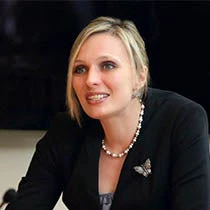 A convening of African government ministers and leaders of African regional economic communities to discuss trade and development strategy. Photo: Simone D. McCourtie / World Bank
A convening of African government ministers and leaders of African regional economic communities to discuss trade and development strategy. Photo: Simone D. McCourtie / World Bank
In the past decade, a new generation of Delivery Units has emerged in Africa, demonstrating innovation by adapting to the African context and refining the original model. Representatives from fifteen African Delivery Units met in Dakar, Senegal to evaluate the contributions of the Units to Africa's progress amidst global instability.
Delivery Units could act as catalysts for change in challenging environments, creating pockets of effectiveness. By concentrating on specific functions and projects, they have the potential to enhance public sector performance and monitoring.
Delivery Units originated from the United Kingdom in 2001 because delivery of policy commitments was perceived unsatisfactory. Therefore, a new approach was adopted with a team in charge of monitoring priority objectives under the leadership of political authorities. This team developed metrics and indicators and, in some cases, identified bottlenecks to be tackled to achieve the policy objectives. While this model has initially spread across anglophone Africa, it encountered difficulties when replicated without considering the unique circumstances of developing countries.
These Units are usually staffed by dedicated professionals with either international and/or private sector experience, focusing on implementation of priority projects and programs for their countries. For example, the Forum of the African Network of Delivery Units was hosted by the Senegal’s Delivery Unit, known as BOS (Bureau Opérationnel de Suivi du Plan Sénégal Emergent), which presented its contribution to the implementation of the Plan Senegal Emergent (PSE).
What are the main lessons of the second generation of DUs?
Delivery units were often victims of their successes in developing countries. Instead of focusing on a few top priorities, some governments expanded the de facto mandate of DUs; when everything becomes a priority, nothing is a priority. This created overly excessive ambitions and parallel structures in charge of numerous non-complementary functions (such as policy and delivery tracking), leading to blurred and overlapping responsibilities and institutional rivalries, and eventual disestablishment of DUs.
However, in countries like Tanzania, after the disestablishment of its DU, implementation issues reverted to their previous form with poor monitoring of projects. It became clear that DUs had essentially filled recurrent voids in countries with weak public sector systems, notably project monitoring and coordination between Ministries, departments and agencies (MDAs). As argued in recent publications, the failure to properly perform DUs duty is not, in itself, an evidence that they are wastage of resources. The value added of the Units was to put a greater focus on implementation rather than on the initial policy choice.
DUs can drive change in challenging settings under specific conditions.
First, they need political backing to coordinate the implementation of key programs, as seen with the Cellule Présidentielle d’Execution et de Suivi des Projets (CPES) in Togo.
Second, reporting routines should be established for DUs to interact with top leadership and drive change. Data-tracking systems and dashboards, like those in Mauritania, are crucial for this purpose.
Third, DU staffing should strike a balance between public sector experience and knowledge of the local political economy, along with individuals who can challenge the status quo and bring private sector expertise.
In the absence of comprehensive monitoring and evaluation systems, partnerships with MDAs are important. DUs can assist them in monitoring progress and overcoming implementation obstacles for priority programs, as seen with the BOS in Senegal. It is crucial to ensure cross-government ownership of results.
African DUs can be seen as pockets of effectiveness within a low-performing public sectors. They gradually improve public sector performance through visible and tangible projects, demonstrating their effectiveness. They bring a renewed focus on impact. In the African countries where the Monitoring & Evaluation function of the government is nascent or non-existent, they introduce the culture of data-driven monitoring, at least for selected priority projects and programs. This way, they do not supplant MDAs functions; in fact, they build capacity, require data gathering and reporting, and empower MDAs to monitor their own initiatives that go beyond priority projects.



Join the Conversation